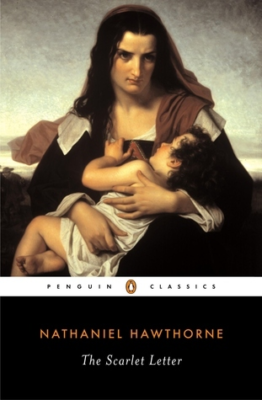
The Scarlet Letter by Nathaniel Hawthorne
Title: The Scarlet Letter
Author Name: Nathaniel Hawthorne
Age Rating: Older Teen
Star Rating: ✦✦✦✧✧
Genre: Realistic Fiction, Classics

Summary: The year is 1642, and you’re living in the strict Puritan society of the Boston Massachusetts Bay Colony. In this strict society, you must live perfectly, lest you be claimed by the Devil when you die.
Historically, Puritans were a sect of Christianity that was persecuted in Britain and thus left for America to gain religious freedom to practice their beliefs in peace.
But this did not result in a tolerant or understanding society, rather, a strict pressure cooker began to form in Massachusetts, with an obvious church hierarchy and punishments consisting of public humiliation to torture.
The Puritans believed in predestination, the idea that a person’s fate after death whether it be heaven or hell, was decided at birth by God.
However this idea did not give the Puritans reassurance that it didn’t matter what they did if their fates had already been decided, instead, it caused the Puritans to believe that if made a single mistake, they would fall in the eyes of God, and be condemned to hell, losing their possible place in Heaven.
Therefore, the Puritan doctrine dedicated itself to helping people to keep their place in Heaven (if they even had it in the first place).
Our story starts with the main character, Hester Prynne.
Hester Prynne is the new girl in town, young, alone, and married to a mysterious man, she is the beautiful envy of all the vaguely mannish women living in Boston. But, she is not living in a beautiful house or anything of the sort. Rather, Mrs Prynne seems to be a criminal, referenced by how we first see her coming out of prison.
So, how come a young and beautiful woman like Hester has been imprisoned?
Well, the answer is clearly shown by the red letter ‘A’ embroidered onto her dress, Hester is an adulterer.
And the result of her sins? A little baby in her arms, forced to weather the harsh conditions of a dark prison in its first few months of living.
That’s the beginning of Hawthorne’s masterful novel, and if that doesn’t seem to be the picture of intrigue, I don’t know what is!
Favorite Character: My favorite character was Roger Chillingworth, he was a bit stalkerish for sure, but his treatment of Hester was actually pretty kind all things considered. His whole arc ended on a positive note as he bequeathed all of his estate to Hester’s child at the end of the story.
Chillingworth was an old, wizened man, considered a learned scholar and doctor by the society, but he still managed to give somewhat antagonistic vibes.
For a reason I shan’t name, in fear of spoiling the story, Chillingworth was adamant on finding out who the father of Hester’s child was. And he barely succeeded. Even though the truth was quite obvious, he, along with the other townspeople, could not seem to figure out who the father was, and seeing this honestly frustrated me.
Storyline Development: The story is full of drama and moments of indignation for the reader. I always got seriously annoyed when the townspeople failed to figure out the truth even when it was right under their noses. But overall the story progressed at a slow pace. The most interesting part of the story was when one of the town’s women: Mistress Hibbins asked Hester to go to the forest with her so they could dance with the Black Man (aka Satan). I was laughing out loud when I read this passage. The only reason Mistress Hibbins had not been executed was because she was the governor’s sister. This also served to foreshadow that she would be executed in the later Salem Witch trials.
Worldbuilding: The worldbuilding is quite poor in this book. Hawthorne holds the audience’s hand throughout the entire story by pointing out the themes he’s trying to highlight and overusing the word “ignominy.”
Due to the lack of subtlety and obvious hand-holding, it was sort of a pain to get through the story without rolling my eyes into the back of my head. Whilst the plot was certainly original, I couldn’t help but feel that Hawthorne could’ve taken care to add more nuance to his story.
The town where the actual story took place though was easy to imagine. I could see the mental image of the cemetery next to the prison in my mind’s eye, which goes to show that Hawthorne’s flowery prose helped visualize his ideas.
My Thoughts: The book is great in the context of the time frame where it was published. The author Nathaniel Hawthorne was a transcendentalist, writing his magnum opus during the Second Great Awakening in America, where he realized that heightened religious fervor could have deep consequences for those who didn’t fit within other’s religious ideals.
Hawthorne’s ideas mainly stemmed from the generational guilt he felt from his great-grandfather’s involvement in the Salem Witch trials, where the man sentenced many innocent women to death.
Overall, this book has more impact if you’ve studied American history to some extent, especially if you’ve studied the religious reasons for the American colonists’ journey to America, as well as the First and Second Great Awakening. But do not worry if you haven’t, Hawthorne has taken the liberty of assuming the readers don’t know anything, so you can read this book even without any context!